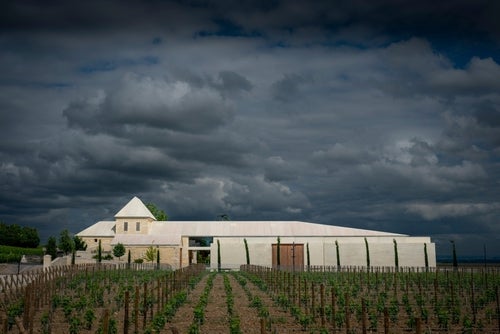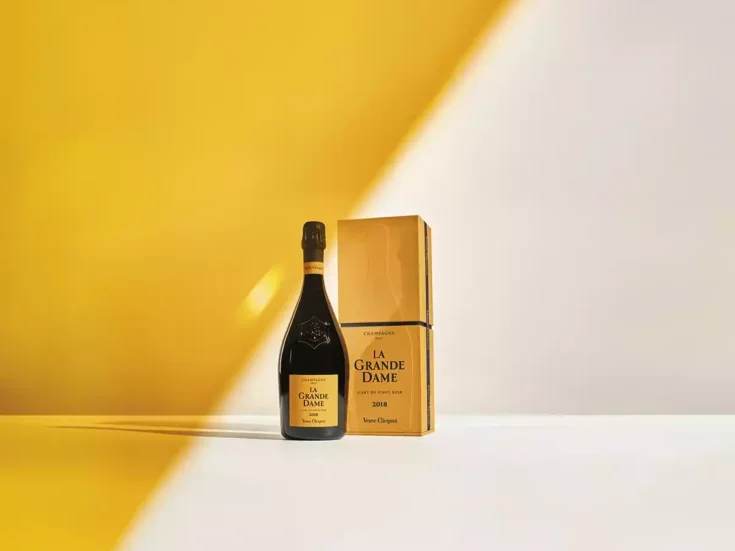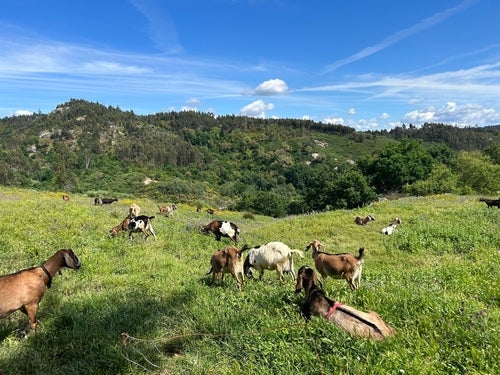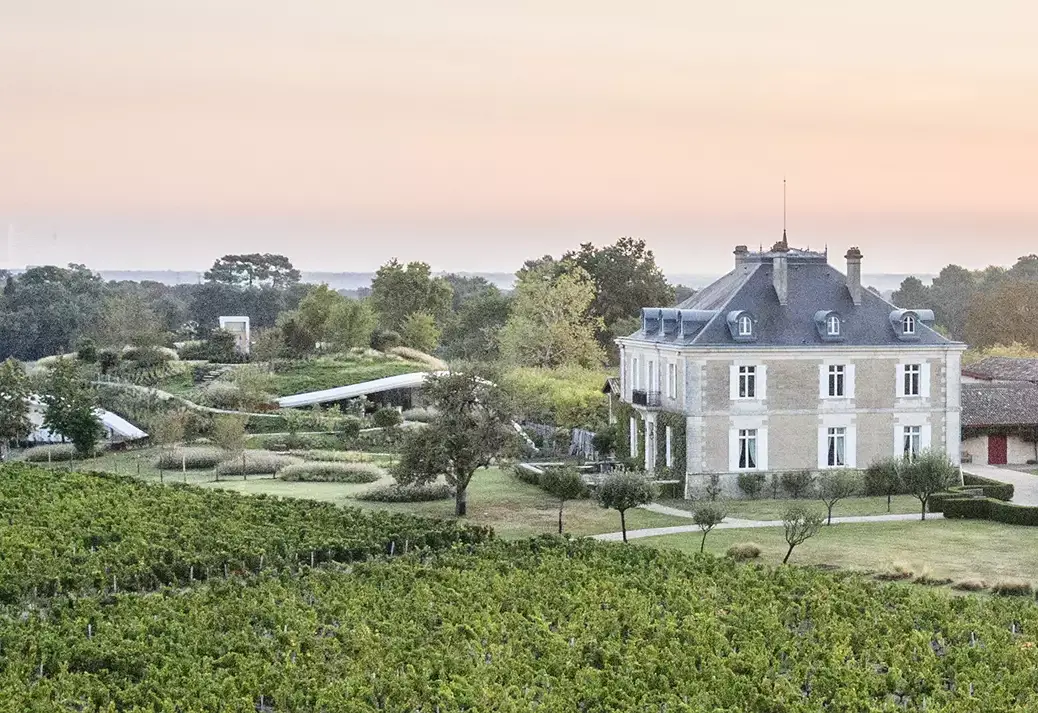
The great Graves estate Château Haut-Bailly is getting even better, says Simon Field MW after a tasting marking a quarter-century of ownership by the Wilmers family.
Three qualities are necessary to elevate a winery from the merely great to the pantheon of the very greatest. Haut-Bailly has the technical ability and the environmental backdrop for sure, but what really singles it out is the commitment and sense of duty of those who run it. This is immediately obvious to all those who are lucky enough to visit. The charismatic Véronique Sanders, today’s managing director, sums it up neatly: “Haut-Bailly is greater than those who serve it.” Quite so. We gather at the château to taste the fruits of what she describes as “a quarter of a century of evolution and accelerated transformation.”
The history goes back a little further than 1998, needless to say. In 1630, Haut-Bailly the property was acquired by the Parisian banker Firmin le Bailly, whose main contribution was his name. Two centuries later, the vineyard was expanded and the physical château was built, this time by the influential Alcide Bellot des Minières, who was known as “the king of the vintners.” Alcide was drawn to this magical terroir, located on relatively high ground (a dizzying 158ft [48m] of altitude makes it the highest in Pessac) and its mosaic of distinctive sandy, gravelly soil, with petrified prehistoric fossil shells beneath. The Sanders influence began with Véronique’s great-grandfather Daniel in 1955 and then her grandfather Jean, both of whom cultivated a burgeoning reputation, paying particular attention to Alcide’s cherished 4ha (10-acre) old-vine plot at the heart of the property that, quite literally, marks it out and still contributes 20 percent of the grand vin, etching its personality.
Another banker stepped in to rescue the estate from a period of commercial uncertainty: a certain Robert G Wilmers, chairman of M&T Bank in New York (known as “the good banker”), who, in 1998, initiated the happy period of “creative evolution” that is celebrated by our tasting. Robert was a widely respected philanthropist, and his good works have been carried on by his son Chris, a professor of ecology at the University of California, who has been able to bring a superbly well-informed sustainable agenda to the property. Ongoing studies focus on areas such as plant density, bunch density, and plantation volume, to name but three, and the property is pretty much managed on (de facto) biodynamic principles. This expertise has fueled the renaissance yet further, bringing Haut-Bailly back to the status it enjoyed in 1900, when it was identified by Henri Guiller as one of “les Grands Vins de la Gironde,” along with châteaux Lafite and Mouton Rothschild.
Michel Bettane rightly praises the “timeless classicism” of Haut-Bailly, and Véronique is eloquent in outlining a philosophy informed above all by “the ethics of balance.” These are veritable haute couture wines, à la Chanel, she says. Chris adds, “We try constantly to optimize every aspect of everything we do, using a method based on what the Japanese call kaizen, a term meaning a change for the better, or a continuous improvement. This is our trademark and the secret of our resilience.”
Improvement and inspiration
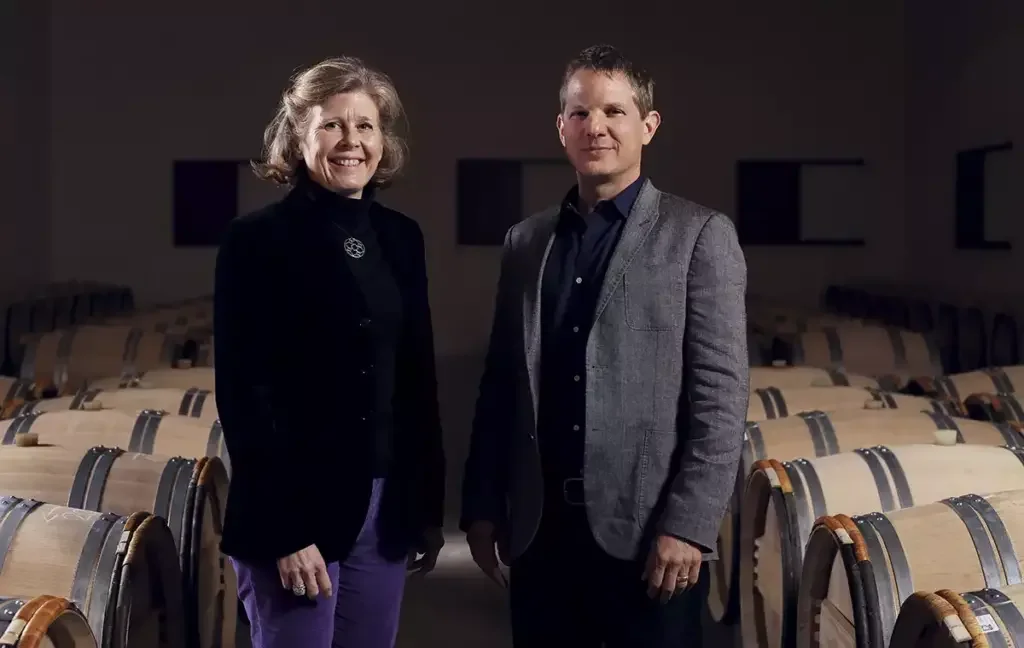
The continuous improvement is immediately evident when one visits the new winery, its creation informed by the same ecological criteria as the vines themselves. Crafted by the architect Daniel Romeo, the partly underground structure adheres to an “aesthetic of natural energy,” with its freestanding domed roof (covered with cooling vegetation, the “roof garden”), its bespoke conical fluted vats, and its multisensory tasting room. Nature feels very close because nature is very close; a homogenous parcel of 30ha (74 acres) (60 percent Cabernet Sauvignon, 34 percent Merlot, 3 percent Petit Verdot, and 3 percent Cabernet Franc), each plot harvested and vinified à la carte. Minimal intervention thereafter is axiomatic, with gentle remontage favored and then elévage for 16–18 months. Haut-Bailly works with six different coopers. They describe here an “interconnectivity of creativity.”
All is in place. And what about the wines themselves? The tasting does not disappoint. The two key takeaways are, first, the very discernible progress over the 25-year period, especially evident in the years following 2008; and second, the fact that Haut-Bailly has an unfailing knack of performing extremely well in so-called off-years—2002 and 2007 being good examples. The work done by technical director Gabriel Vialard and the rest of his team has been outstanding. Consistency shines through, allied to the very particular taste profile that marks out this special enclave of the Graves from the vineyards of the Médoc. An inspiring tasting and an inspiring property, managed with both humility and savoir-faire. And getting (even) better all the time…
Tasting Château Haut-Bailly
Château Haut-Bailly; March 21, 2023
1998 (59% CS, 41% M)
Described by Véronique as “a strange year,” with a wet spring and a very hot summer, then an even wetter autumn. Vigilance required, in other words, with the sorting table put to good use. A floral nose and incredibly refined palate; dried fruit, graphite, and vestigial dark fruit poised and harmonious. Aeration only confirms suspicions that this has aged extremely well and is still poised on a plateau of eminently satisfying accessibility. 93
1999 (65% CS, 25% M, 10% CF)
1999 was warmer and wetter than usual, with unpredictable weather and challenging conditions during the growing season. The wine has an evolved magenta color and lovely, gamey aromatics, with hints of truffle and Havana cigar, its personality somewhat autumnal. There is fine acidity, however, defiant of the reputation of the vintage, and impressive length, with notes of sous-bois and incense on the finish; leafy yet composed. Rather pretty, bucolic, whimsical. 91
2000 (50% CS, 50% M)
A warm and generous year, overall temperatures nearly 4°F (2°C) above average. The grapes were marked by thick skins, the musts by depth of color and aromatic potential. The Merlot shares the honors, unusually, in 2000. An attractive nose, Pessac gravel holding its own with an impressive depth of fruit. The tannic weave is beguiling, silky, and reassuring, carrying all before it. Fine and composed on the finish. 94
2001 (65% CS, 35% M)
A really classic year; discreet charm, a lot of cigar-box character; hearthside, but intensity and persistence ring down the years. This smart garment now seems a little loose around the waist, but one approaches it fondly, like an old friend. The passing of time resounds to something elegiac. Pleasure is still guaranteed. 93
2002 (62% CS, 35% M, 3% CF)
A poor summer, somewhat redeemed by a fine late season; the harvest was protracted (September 20–October 15) and not without anxiety. Care was required in the winery to avoid extraction of harsh tannins. A second bottle was opened after a rather scrawny debut; this one is more lifted, with savory, cedary aromas, hints of charcuterie and woodsmoke, and more intensity on the palate. Dark chocolate vies with wild plums and dried fruit; there is an impressive kiss of acidity, a floral lift, and incredible length. The tannins are perfectly resolved, but this does not in any way undermine an innate freshness. Here is yet more proof, should it be needed, that Haut-Bailly has got form when it comes
to outperforming the reputation of the vintage. We see this time and time again during the tasting—and sometimes when the vintage in question already has a very good reputation. 93
2003 (56% CS, 38% M, 6% CF)
Extreme conditions and an extremely early harvest, done and (literally) dusted by September 27. Deep color at the core, near opaque, terra-cotta at the rim, with a nose of sous-bois, dried fruit, and tobacco leaf. Nothing volatile, however, with a tannic cloak of heavy plush, the fruit somewhat overwhelmed by the canicule… Tight and just a little drying on the finish. 91
2004 (50% CS, 45% M, 5% CF)
A generous vintage in terms of both quality and quantity. A late flowering but then a threat of drought, the water stress resulting in grapes with high levels of polyphenols.
Dense, imperious color. A very fine Pessac nose: dark fruit; camphor, gravel, and the faintest hint of pressed fig. Lovely weight and poise, with noble, resolved tannins and impressive balance; just fading a little, perhaps, as in a famous ballerina, Fontaine or the like. But oh, so delicate… and proud… One would definitely wish to see another performance. 93
2005 (56% CS, 38% M, 6% CF)
Exceptional weather, with marked diurnal variations, and very mature grapes which did not lack for structure. The high ABV of the Merlots (over 14%) was unprecedented here. The wine is a conspicuous success, showing few signs of slowing down nearly two decades later. A glorious sheen and seductive nose of cedar and forest floor, a hint of smoke in the background. The mid-palate fruit is generous and persistent and the acidity, courtesy of the cooler nights, beautifully balanced. An impressive achievement, deserving Véronique’s soubriquet: “legendary.” 95
2006 (65% CS, 35% M)
A warm, early summer, then a cool August and an Indian summer. A reticent canon of wines, just starting to open up, as is the case here. Holds color well. A nose of soft leather, leaves, and autumn evenings. Behind that, kirsch and bilberry, flowers and warm stones. A sheen of oak embraces the palate: delicate, lingering, still keeping us guessing. 91
2007 (70% CS, 26% M, 4% CF)
Heavy rainfall in May bequeathed both a very real risk of mildew and a somewhat mediocre reputation ever since. Once again, however, Haut-Bailly raises its game in the face of adversity. Charming nose, graphite, petrichor, and dried fruit… The grip of the Cabernet fails to intimidate; there is still plenty of charm, harmony, and vestigial red-fruit elegance. The wine has a poised and crisp finish, resourceful and respectful—the quintessence of classy Pessac fruit from one of its leading lights. 92
2008 (70% CS, 30% M)
A tale of low yields, a late but long harvest (September 25–October 23), and the need for vigilance in the winery. Cool midsummer temperatures have meant that the acidity levels are unusually high. Deep color; garnet rim. The nose is pleasingly complex: seaweed, black tea, and heather defy the more usual descriptors, aromatically speaking. The tannic embrace is powerful, the acidity, as expected, marked but with a sweetness of the fruit that is both embracing and seductive. A slightly world-weary, leafy note on the finish. But only slightly… Highly accomplished, all in all. 93
2009 (60% CS, 37% M, 3% CF)
A delayed budbreak, but then ideal flowering (Merlot and Cabernet flowered at the same time) and thereafter perfect conditions. Véronique describes this year as “mythical.” Robert Parker agreed, I seem to recall. Wines of color, concentration, balance, and generosity. Dense color, with a garnet fade. An intense nose, with dark chocolate and damson, plums to the fore, hints of charcoal and pencil shavings. In terms of intensity, the 2009 takes a significant step up from its forebears; its structure is imposing and grandiose, its tannins stentorian and still rather uncompromising; sappy, broad-brushed, rich, and creamy. A thoroughbred and a worthy template for the characteristics that make Pessac-Léognan stand apart. Not ready yet. 94+
2010 (62% CS, 36% M, 2% CF)
A very hot July bequeathed small grapes with very thick skins, the diurnal gaps thereafter ensuring that the acidity would sit in elegant counterpoint to the concentrated fruit. A powerful vintage with great aging potential and what Véronique describes as “dazzling freshness.” The wine is symphonic in scope, assuredly fresh and refreshing but also structurally intense and powerful. The poise of the fruit (cassis and cherry primarily) is exceptional, with the Pessac imprimatur of stony minerality providing a perfect foil. The tannins are almost perfect, just starting their happy journey to resolution. 96
2011 (50% CS, 47% M, 3% CF)
A challenging vintage in many ways: an exceptionally dry spring but then a cool and rather wet summer, and then optimal conditions for the three-week harvest, which started on September 9. Deep color, holding well. The nose is closed, dignified rather than recalcitrant: graphite, cherry stone, and hints of cedar. The palate betrays the essence of the dry year with an intensity that is redeemed only by the gradual tapering of the finish; the cathedral-like structure builds impressively and finishes eloquently. The high proportion of Merlot has been nicely integrated, and there is nothing atypical here. 93
2012 (60% CS, 40% M)
A difficult year, beset with threats of mildew and wide temperature variants. A late harvest, which was particularly successful for the old-vine Cabernet parcels. Very attractive color, a luminosity from within. A suitably complex nose: flowers, incense, violets, and crushed raspberry. The palate, a duet of graphite and cigar box is, to me, the quintessence of top-quality Pessac rejoicing in the advent of a second decade. Dried fruit and spice; very fine tannin management, and integrated acidity. Polished and poised on the finish. 94
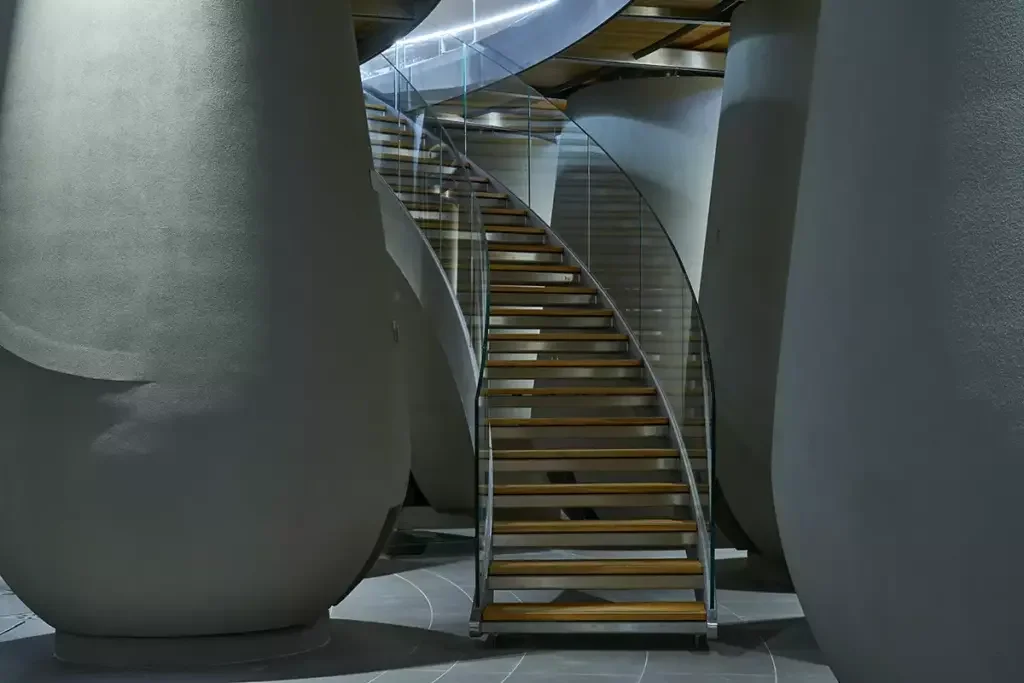
2013 (64% CS, 34% M, 2% CF)
Low yields and a late harvest (October 1–10), with the constant threat of botrytis from the middle of September. Attractive ruby red, a modest fade; young at heart a decade down the track, albeit a rather surly youth, the tannins overwhelming today, the fruit a little clumsy, slightly hollow in the middle of the palate. Foursquare at the moment, but it’s far too early to prescribe anything terminal. Structurally, the wine is a little challenged, however. 90
2014 (59% CS, 41% M)
A very warm hinter-season, with the warmest September since 1961. Before that, something of a helter-skelter year, with the Merlots challenged by threats of coulure and millerandage early on and then unpredictable summer conditions. Very attractive, composed, and elegant; cigar-box, graphite, and hints of spice, with cassis and mulberry to the fore. The red fruit still rejoices in a primary exuberance. Not one for the longest or even longer term, but perfect for today. 92
2015 (60% CS, 36% M, 4% PV)
A happy vintage for all concerned, with all the key dates negotiated under benevolent skies. Even the hot conditions of June and July were helpful, the water stress serving only to align the timetable and to cushion the effects of a cooler August. The results were marked above all by consistency. A generous and food-friendly wine; a good year for Petit Verdot to make its debut. Crushed raspberry, spice, hints of camphor, eucalypt, and cigar box. Fine, poised tannins and a dense, satisfying mid-palate; the cerebral and the sensual do battle, with honors pretty much even on the day. Give this one a special place in the cellar. 95
2016 (53% CS, 40% M, 4% PV, 3% CF)
A year of extremes, which did not preclude a reception of superlatives. Torrential rain and drought marked a card that was much more challenging to negotiate than to assess, the assessment generally positive. Older, deeper-rooting vines, Cabernet especially, came into their own, yielding wines of great character and complexity. Classy nose, with bags of dark fruit, plums, and damsons prominent, a herbal backdrop, fireside comfort, and edgy, gravelly charm, too. Quite hard to read on the palate; rich without being overwhelming, ripe fruit tempered by cleansing acidity and a firm tannic bulwark… Maybe a touch of syrup on the end. The wine is eminently poised; it is served from a magnum and is clearly too young but has a lot more to give. 94+
2017 (60% CS, 32% M, 4% PV, 4% CF)
Intense frosts at the end of April and exceptional rainfall in June—two of the things most people remember about 2017. A shame, because it was actually a dry and rather interesting year, its wines marked by aromatic freshness and purposeful definition. Forward, almost syrupy; pecan pie, greengage, plenty of errant descriptors from a tricky year, somehow woven together. The palate calms the nerves with a more traditional, spirited weave. Dark, slightly foreboding, the ongoing enigma of how Pessac differs from its Médocain cousins. How indeed? Something in the structure, I suspect, a happy marriage of southern charm and northern austerity. The golden mean? 92
2018 (55% CS, 35% M, 5% PV, 5% CF)
A hot year—some may say a brutal one. Humidity and mildew early in the season gave way to drought and a long hot summer. Near-perfect conditions thereafter result in Veronique’s description of “paradise after a hellish spring.” A small crop of densely colored and uncompromising wines. Petit Verdot, it is worthy of repetition, now features regularly in the grand vin. Small yields in this fierce year, but the concentration is rewarding and the structure is stern rather than indulgent or skittish. This is a very agreeable Haut-Bailly, all the more so given the authority of the tannins, which fail to subdue the exuberant fruit and attractive mineral-driven texture. A notable achievement; Haut-Bailly, as always, defers to the personality of the terroir over any of nature’s more bullying inclinations. 94
2019 (56% CS, 36% M, 4% PV, 4% CF)
Less severe than 2018 (and 2020), 2019 was not without its extremes, including a severe heatwave for much of June. Cooler conditions ensued, and the maturation of the grapes was homogenous and highly successful—as, it seems, are the wines. Lovely nose: cigar box, red fruit, fig, incense, and ripe plum; a happy combination, happily rendered. There is real sucrosité here, a generosity not without structure, a structure that perfectly betrays all the virtues of this superb terroir. The best of all possible worlds, therefore. Bravo! 96
2020 (52% CS, 42% M, 3% PV, 3% CF)
A challenging year for many reasons, the pandemic not the least of them. Generally, it got drier and hotter as the season went on (its earlier days far from auspicious, with mildew and frost both threatening), so much so that the harvest was earlier than usual (September 9–25).
Child of a sunny vintage, a ripe and generous wine: hints of marshmallow and plum, dried flowers, and crème de cassis. The palate is a little leaner, more precocious than expected, with shards of red fruit, herbs, and a fine, poised finish, the superlative, gravelly terroir given full vent. Nice length, with hints of soy and seaweed on the finish tempering the dark fruit and challenging expectations. Glossy but refined. 94
2021 (65% CS, 22% M, 10% PV, 3% CF)
A tricky vintage, with frost in early April and mildew blighting the spring. The harvest was late, with the Merlots started on September 27 and the Cabernets finished on October 12. A deep color, with a sooty nose dominated by ripe damson, plums, and hints of dark chocolate. Almost seductive. The palate is a little more challenged; structurally, chalky rather clumsy tannins to the fore. An initial impression of elegance thus cedes to something stern—farouche, even—the dark brooding fruit hitherto somewhat amorphous. This is a pretty good attempt for the year, however. 90
The 2022 was not tasted on the day but was included in my vintage report, having been tasted earlier in the month; see WFW 80, p.196.

